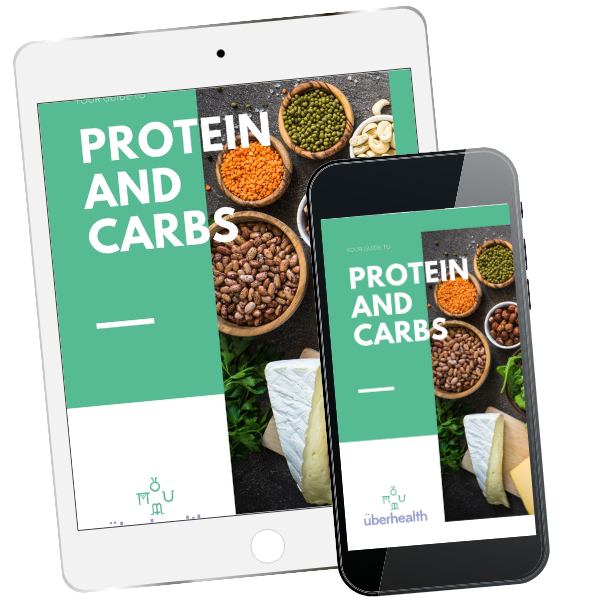Quantity vs Quality: How To Do A Macro Eating Plan Right

Have you been hearing a lot about macro eating lately? Me too. But I have some concerns about what I'm seeing. So let's take a look today at how to do a macro eating plan right. I follow a lot of health, wellbeing, and fitness folk on social media. I do this for two reasons. The first is that I love supporting my community. I love having a strong network of peeps I can call on, share with, or be inspired by. The second is, it’s a great way of keeping on the pulse of what food philosophies are trending. Eating to macronutrients is huge right now. I’ve seen a lot of folks, particularly strength and conditioning folks on socials sharing their “day on a plate.” And while I love the realness that comes with it, I sometimes worry about the messages we may send to our communities.
What Is A Macro Eating Plan?
Eating to macros, particularly for muscle growth and strength, started taking centre stage when CrossFit was really taking off. Don’t get me wrong, I have been using carbohydrate to protein ratios for a long time for my athletes, particularly endurance athletes. However, this style of eating feels a little different. Essentially, what athletes are doing is using apps like My Fitness Pal or My Net Diary to work out how many calories they need to gain muscle based on physical activity levels (PAL) and basal metabolic rates (BMR). They then set the ratios of their macronutrients (macros), fats, proteins, and carbohydrates to try and maximise muscle gain. This usually means a higher protein and higher carbohydrate intake.
What’s The Problem?
To be honest, I have no problem with peeps using tools like these to gauge and improve their macronutrient intake. As I said, I’ve been playing with athletes’ macros for years to help them get the most bang for the buck with their fuel. My concern with promoting this style of eating is that for some peeps it becomes a focus on quantity over quality. Here's what I mean. Instead of focusing on whole foods such as:
- fresh fruits
- vegetables
- wholegrains
- legumes
- nuts & seeds
- eggs
- lean meats
- fresh water
And topping up with ‘extras’ such as sports gels, jams/honeys and smoothies, there are folks who see only numbers. For example, they may think, “I need to reach 2000 calories, and 55% of that is carbohydrate.” Then they look for any food that will help them reach those numbers. They may reach for sugar or syrup in their coffees, down a giant cookie for morning tea, and grab some hot chips for lunch. Sure, they’ll be hitting their macros. But a lot of these ‘high carb’ foods they’re choosing are what I call low ‘bang for buck foods,’ meaning they are low in vitamins, minerals, and other phytonutrients.
Will Eating Like This Help With Gains In The Gym?
Potentially. As we all know you need to be eating a surplus to make muscle when doing strength and conditioning work.
Are There Any Side Effects From Eating Like This?
Well, yes. As I’ve mentioned they may be hitting their MACRO nutrients, but what about the MICRO nutrients? Whilst micronutrients don’t directly lead to muscle growth, they are important for recovery, repair, immune support, pain, sleep, and all the other side aspects required to perform strength and conditioning work well.
So, What’s The Balance?
It’s important to find a balance. If your goal is to eat to macros, be it for strength, endurance, or weight loss, I encourage you to think of your micros first. Maybe try some of these ideas:
- Before you reach for a candy bar, have you had some fruit today?
- Could a smoothie with berries, banana, avocado, spinach, frozen cauliflower, protein powder, cacao, and a squirt of honey be an option instead of a cookie for morning tea?
- Could you boost your carbs by adding in some whole grains, sourdough, or gluten-free toast to your breakfast, along with your eggs, mushrooms, tomato?
Quality Over Quantity
So, if you’re in a build phase, off-season recovery, or looking to gain muscle ... or if you’re the opposite and looking to lose weight or shredding, and you’re focusing on macros; I urge you to remember quality not quantity. It’s okay to have macro goals. But it’s important to remember the whole picture of what food can do for you other than make you bigger or smaller. Picture a muscle built from pizza and chocolate. It may have been tasty, but picture that muscle. Would it be a little oily from the pizza cheese? Does it get a bit soft and melty in the heat like chocolate? Now picture a muscle built from berries, brown rice, lean meat and nuts. Is this muscle a beautiful red muscle? Round and smooth like the berries? Is it strong like an almond or Brazil nut?
What Sort Of Muscle Do You Want To Grow?
I encourage you to picture what your muscles look like based on the fuel you give them. And if you find you:
- can’t shift the macro mindset
- are struggling to gain muscle
- or need help with race fuelling
It might be time to dive a bit deeper. I am currently taking on more clients for 1:1 private consultation. Reach out here.
FREE RESOURCE


